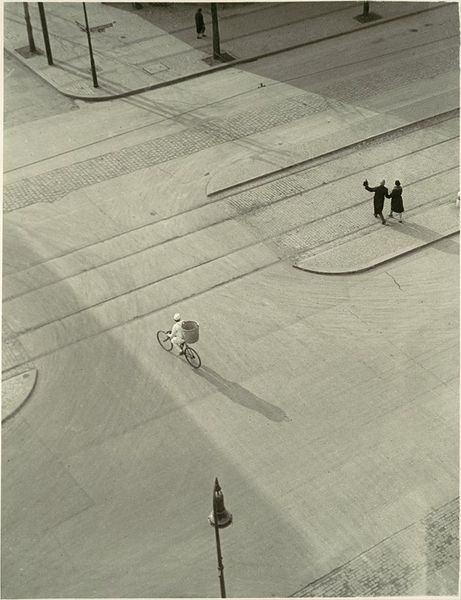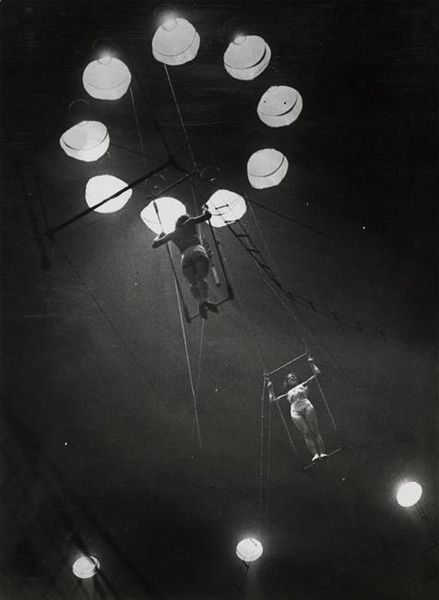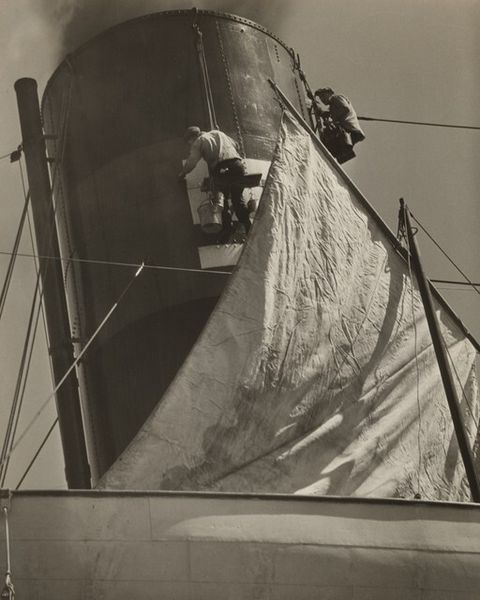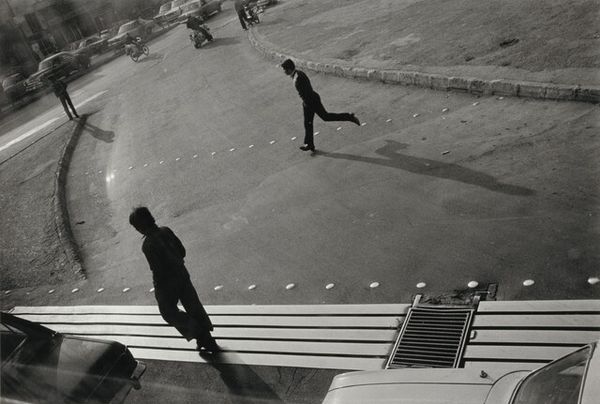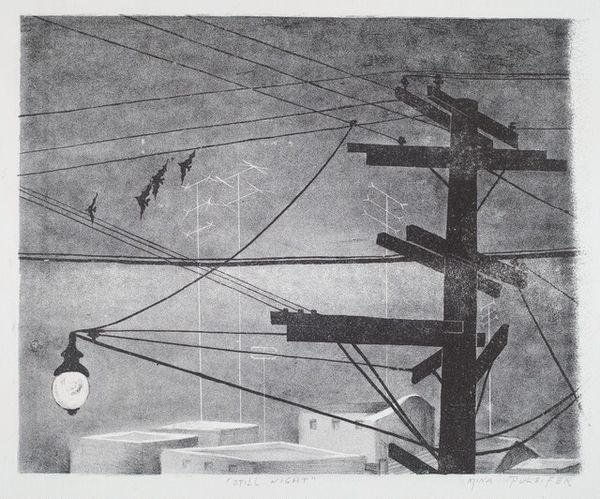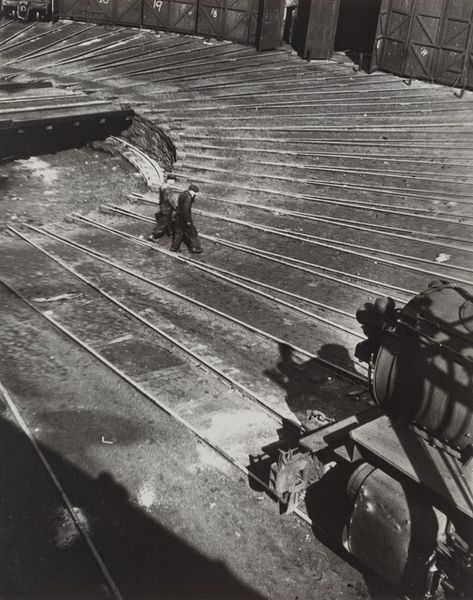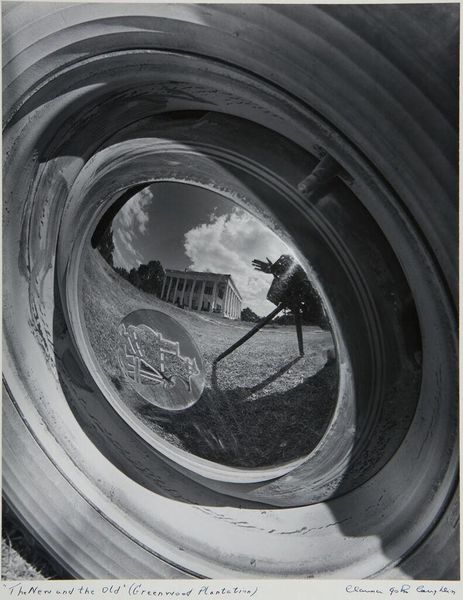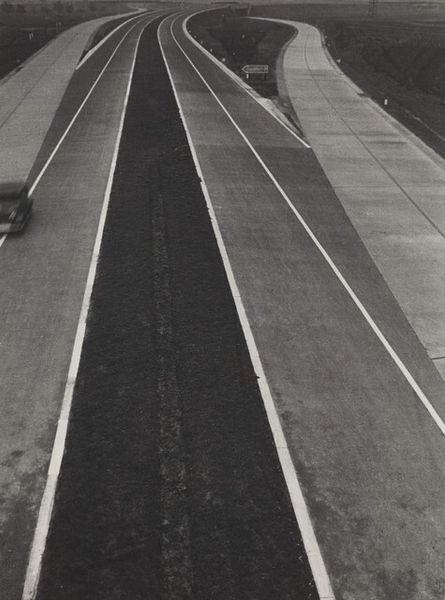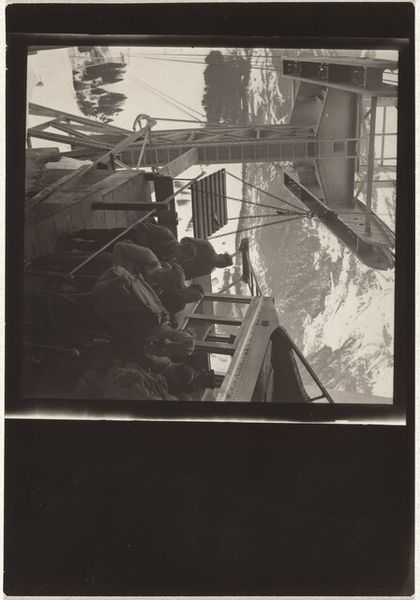
photography
#
outdoor photo
#
charcoal drawing
#
street-photography
#
photography
#
geometric
#
black and white
#
monochrome photography
#
cityscape
#
monochrome
#
modernism
#
monochrome
Dimensions: image/sheet: 11.1 × 7.9 cm (4 3/8 × 3 1/8 in.) mount: 40.7 × 33.2 cm (16 × 13 1/16 in.)
Copyright: National Gallery of Art: CC0 1.0
Editor: This is György Kepes's photograph, "Berlin," from 1930. The city scene is strikingly captured in black and white, but it is viewed from an angle, or from a window in a tall building perhaps. It feels somewhat detached and sterile due to the high angle of the shot, which lends it an incredible flatness, but I’m fascinated by its stark geometries. What do you see in this piece? Curator: From a formalist perspective, the photograph compels us to deconstruct its arrangement of lines and shapes. Note how the tram lines bisect the frame diagonally, creating a series of interconnected geometric forms. How does this structure dictate our interpretation of the whole image, do you think? Editor: The lines give structure, but they are also visually compelling. Curator: Indeed. Observe, also, the tonal contrasts—the interplay of light and shadow which accentuate the flatness you have noticed. What impact does the contrast of dark and light have? Editor: The darker foliage at the lower left almost acts as a grounding element, juxtaposed with the stark planes of the street, and provides a powerful tension. Curator: Precisely. Kepes isn't simply documenting Berlin, but creating a carefully constructed visual experience. This interplay of textures and forms within a flattened perspective is what defines the image's expressive qualities. What have you learned in our exchange today? Editor: Focusing on the lines and shapes emphasizes that the photo is more than a scene; it's a designed composition with strategic tonal arrangements. Curator: Exactly. Analyzing artwork at its basic forms provides an avenue for a new way of interpreting it.
Comments
No comments
Be the first to comment and join the conversation on the ultimate creative platform.
